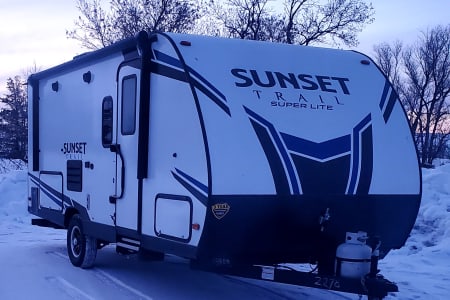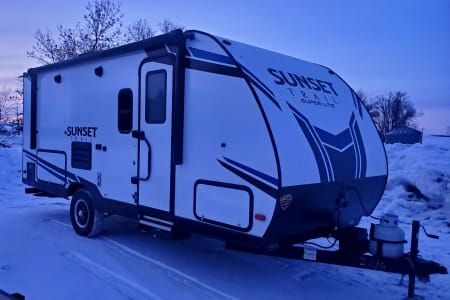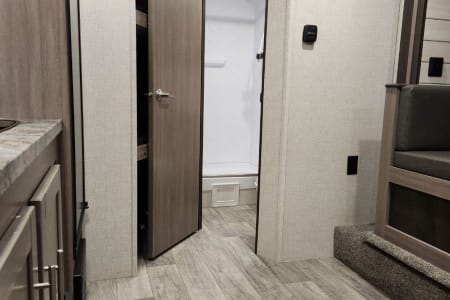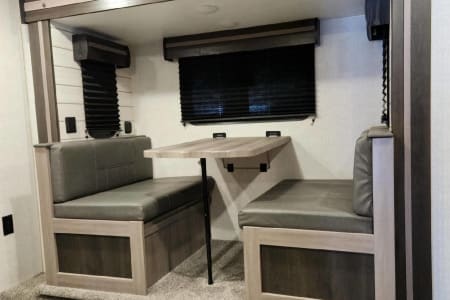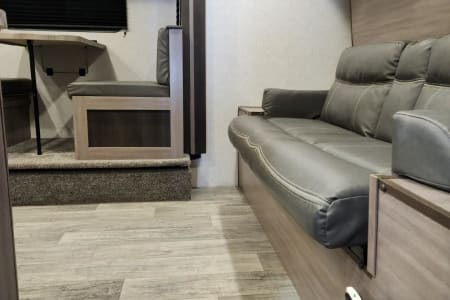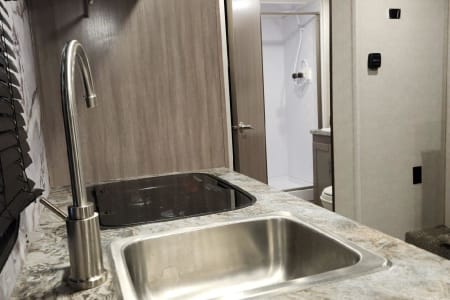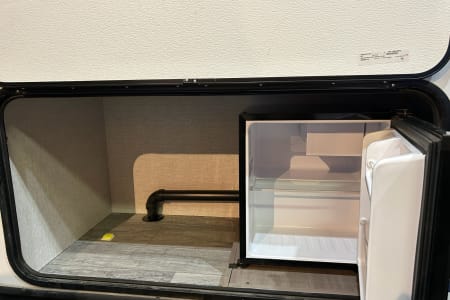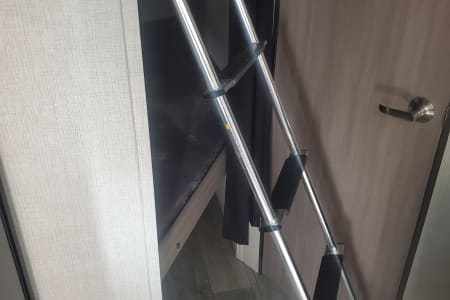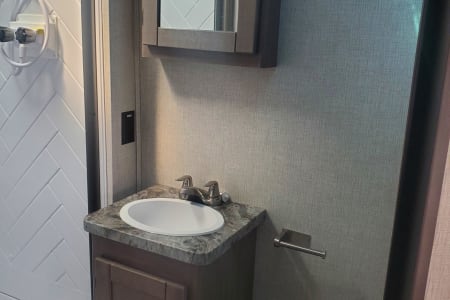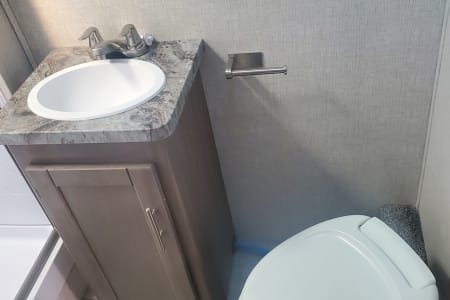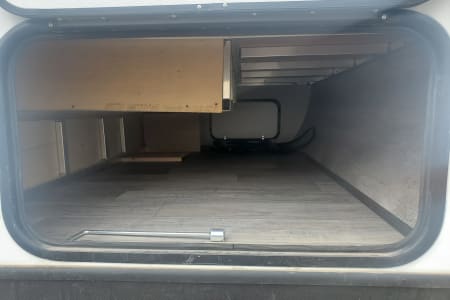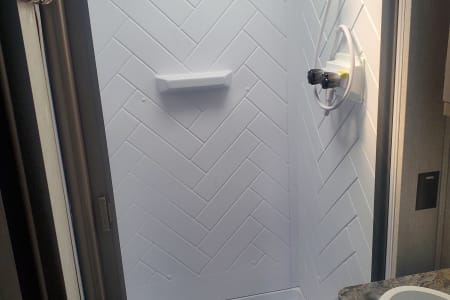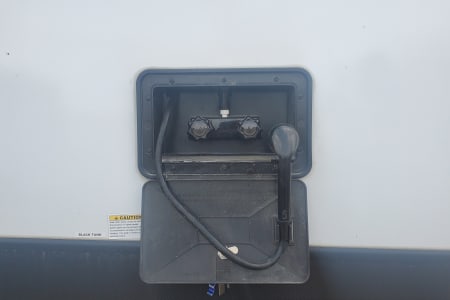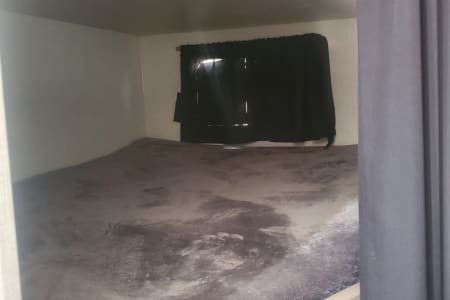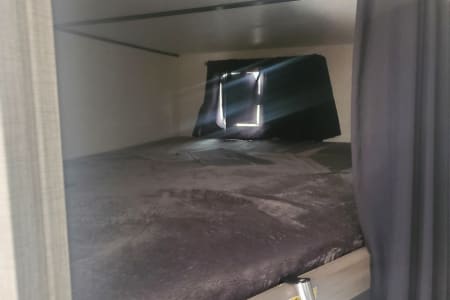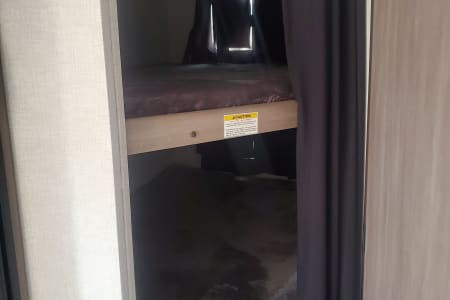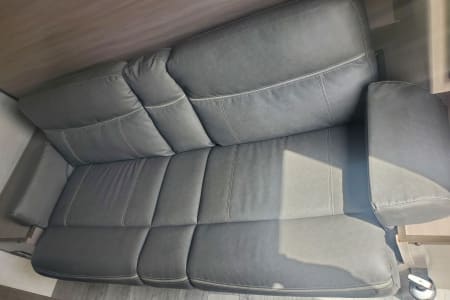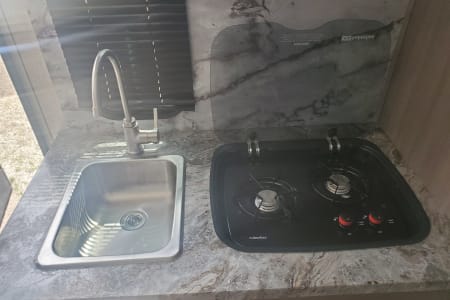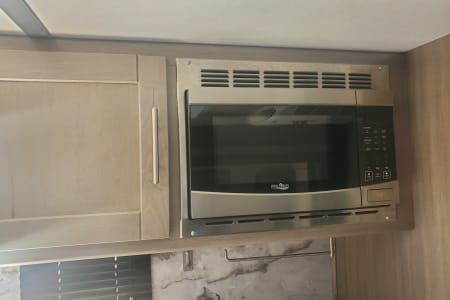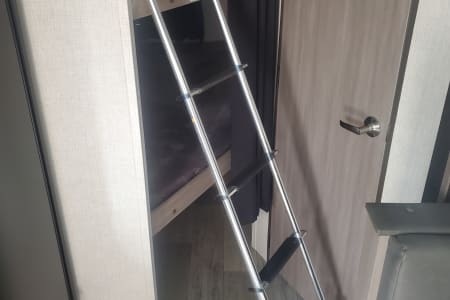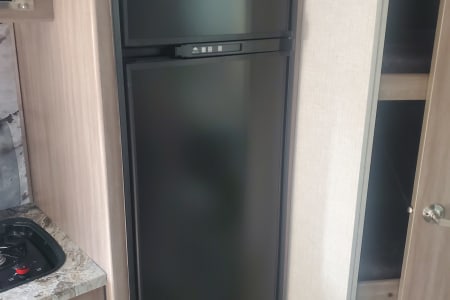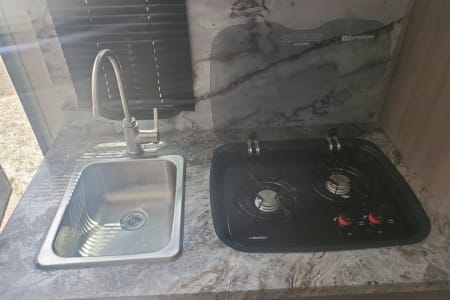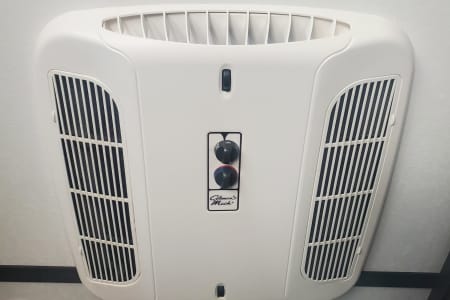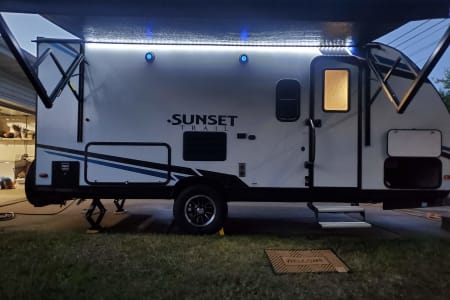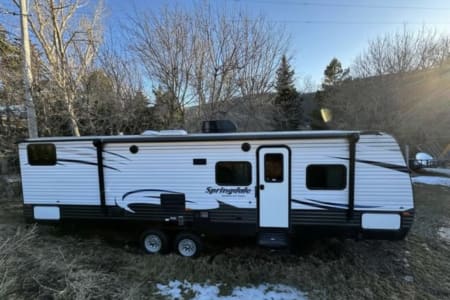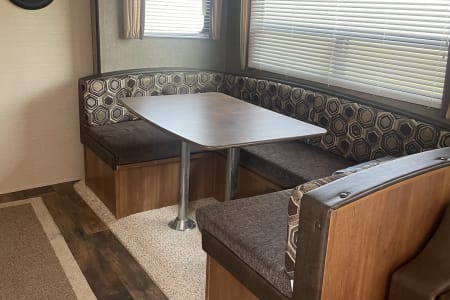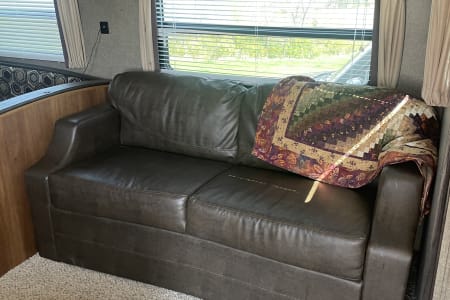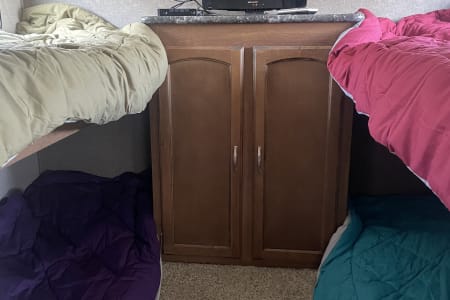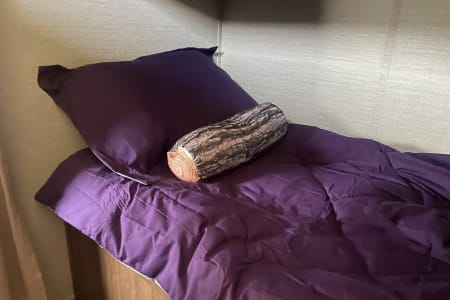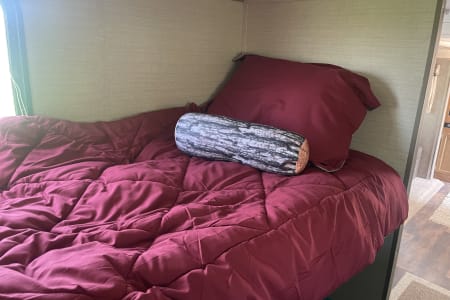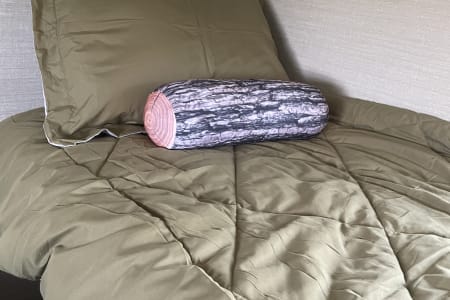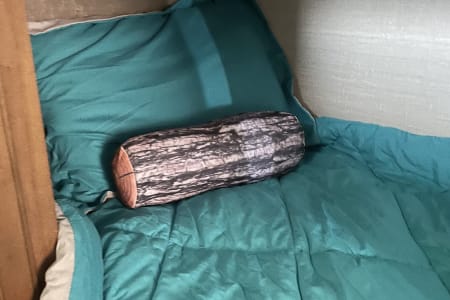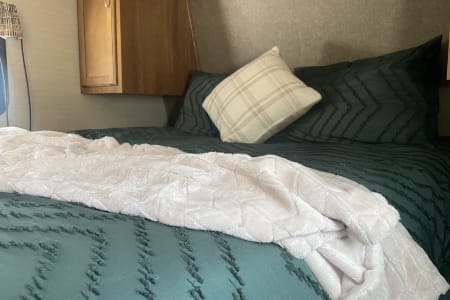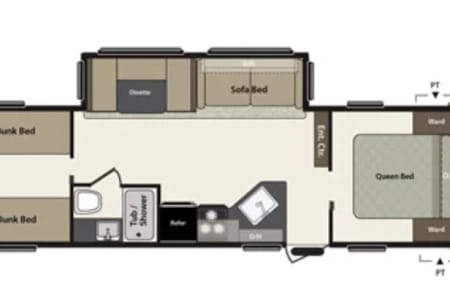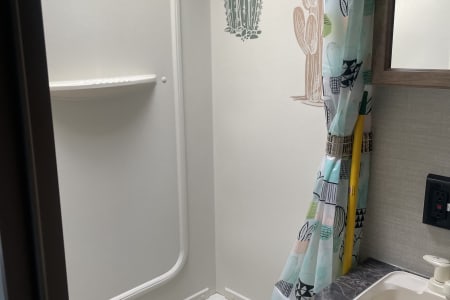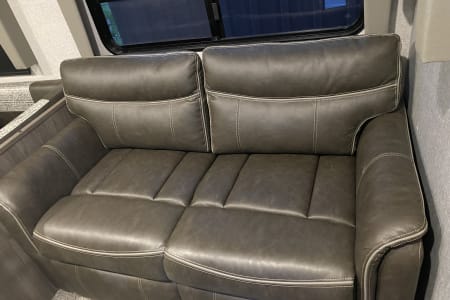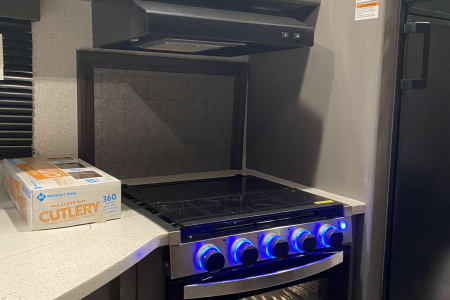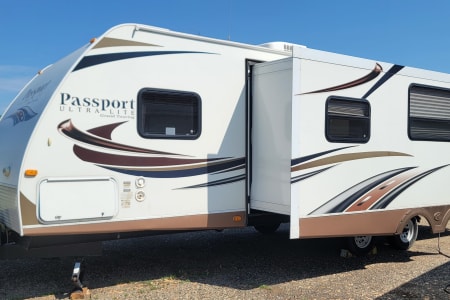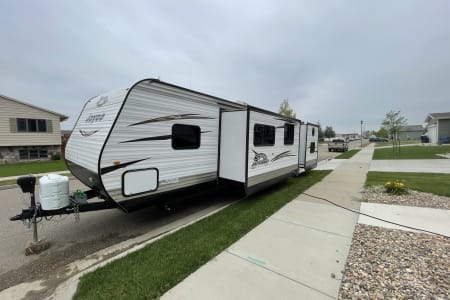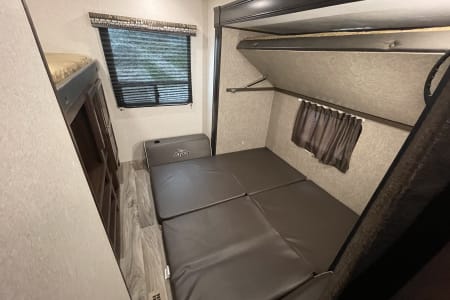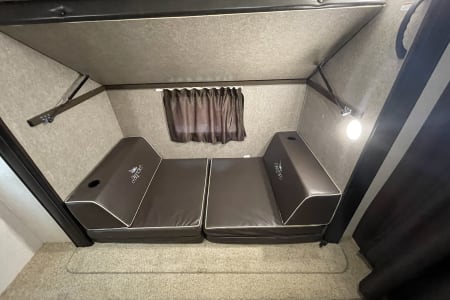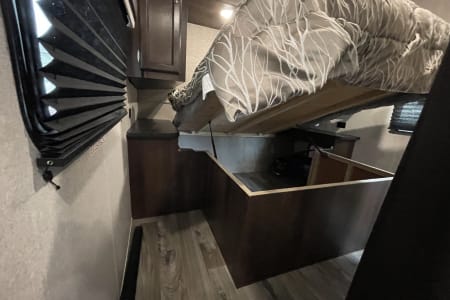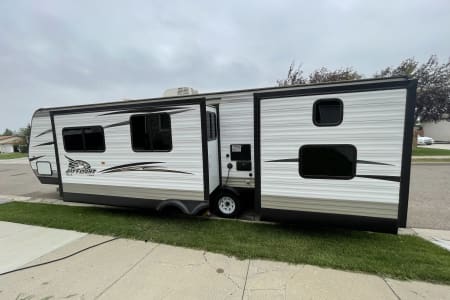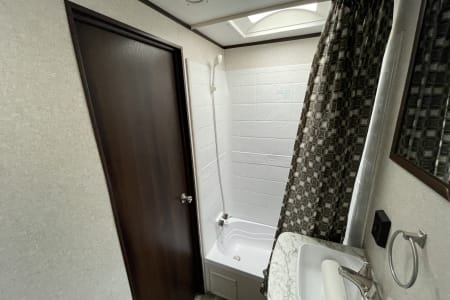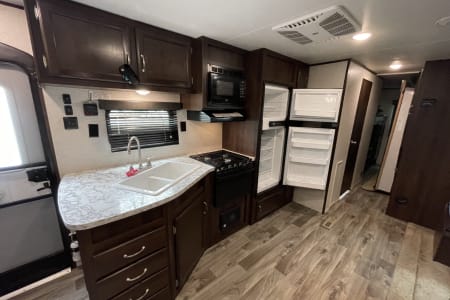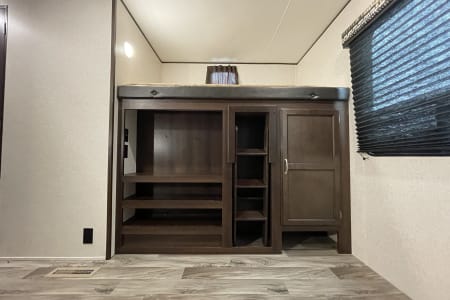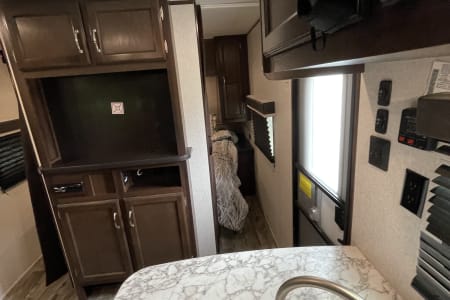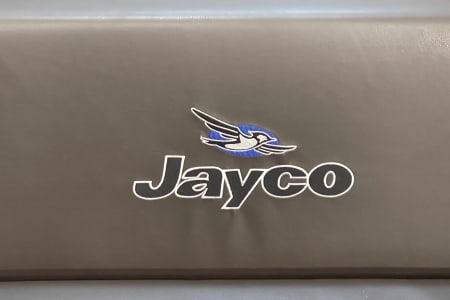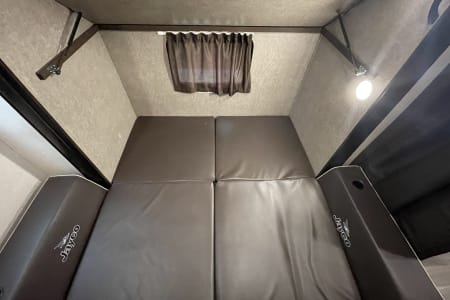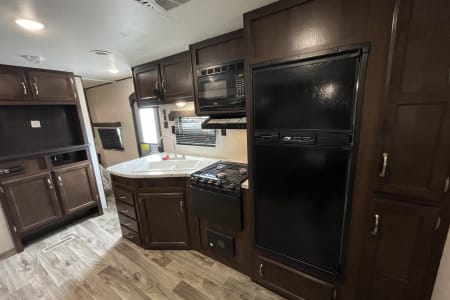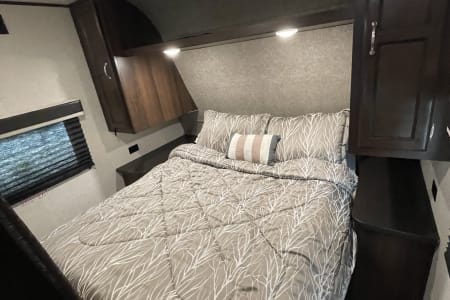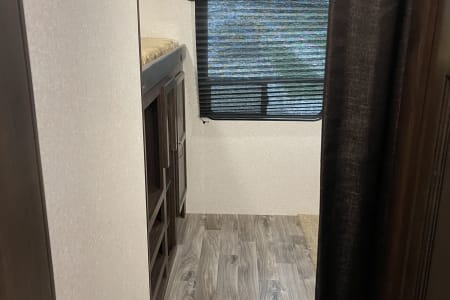Theodore Roosevelt National Park North Dakota (ND) RV Rentals
RV Rentals Dates
Home / National & State Park Guides / National Park / Theodore Roosevelt National Park
Looking for RV rentals, camper van rentals or travel trailer rentals near Theodore Roosevelt National Park?
Introduction
Theodore Roosevelt National Park is a haven for RV campers seeking a unique and immersive outdoor experience. This national park, located in North Dakota, offers a combination of stunning landscapes, rich history, and abundant wildlife, making it an ideal destination for RV enthusiasts. Let’s delve into the reasons why Theodore Roosevelt National Park is a must-visit spot for RV camping. The history and cultural significance of Theodore Roosevelt National Park add a layer of depth to its natural beauty. Named after the 26th President of the United States, this park pays homage to Theodore Roosevelt’s love for the outdoors and his conservation efforts. It was during his time in North Dakota that Roosevelt found solace and inspiration, shaping his vision for preserving America’s natural wonders. The park preserves the rugged badlands landscape that Roosevelt once roamed, allowing visitors to step back in time and connect with the rich history of the region. RVThereYet is an RV rental company, offering a diverse fleet of motorhomes, including Class A, Class B, and Class C Rentals, Travel, Trailers, and Motorhomes for unforgettable adventures in scenic RV parks and campsites in Theodore Roosevelt National Park. Ensure early reservations for camper rentals at Theodore Roosevelt National Park.
RV Rentals in Theodore Roosevelt National Park
Coupon Code: RVTHEREYET - 10% Off
Coupon Code: RVTHEREYET - 10% Off
Coupon Code: RVTHEREYET - 10% Off
Coupon Code: RVTHEREYET - 10% Off
Coupon Code: RVTHEREYET - 10% Off
Transportation
-
Driving/Transportation
When visiting Theodore Roosevelt National Park the most convenient and flexible transportation option is traveling by private vehicle. The park is accessible from three separate entrances the North Unit Entrance the South Unit Entrance and the Elkhorn Ranch Unit. Visitors can easily access the park by driving their own cars RVs or rental vehicles. It’s important to note that there are restrictions on rig sizes within the park. The maximum vehicle length allowed in the South Unit is 30 feet while the North Unit allows vehicles up to 60 feet in length. These restrictions ensure that visitors can navigate the park’s scenic drives and parking areas safely and without any issues. Traveling by private vehicle allows visitors to explore the park at their own pace stop at viewpoints and access various hiking trails and attractions within the park. So hop in your car or RV hit the road and embark on an unforgettable journey through the captivating landscapes of Theodore Roosevelt National Park.
-
Parking area
Theodore Roosevelt National Park offers designated RV parking areas throughout the park allowing RV owners to explore the park’s attractions comfortably. These designated parking areas provide ample space for RVs to park while visitors venture out on foot to explore the park’s trails and viewpoints. However overnight parking for RVs outside of designated campsites is not permitted within the park. It is recommended to camp with an RV in the park’s designated campgrounds which offer amenities such as electrical hookups restrooms and picnic areas. While alternative transportation methods can be used to explore specific areas of the park having an RV provides the flexibility and convenience of having all your amenities with you throughout your stay.
-
Public Transportation
Theodore Roosevelt National Park does not offer public transportation options such as shuttle buses or walking paths for getting around the park. The best way to explore the park’s attractions and scenic drives is by private vehicle. Visitors can drive their own cars RVs or rental vehicles to easily access the various entrances viewpoints and hiking trails within the park. Having your own transportation allows for flexibility and the ability to explore at your own pace.
Top Campsites in Theodore Roosevelt National Park
-
Reservations camping
Located just outside the South Unit of Theodore Roosevelt National Park Medora Campground is a highly sought-after camping destination. With over 300 sites including both RV and tent sites it offers a variety of options for campers. The campground provides amenities such as electrical hookups restrooms showers and a camp store. Activities in the area include hiking biking and exploring the charming town of Medora. Medora Campground is pet-friendly and open from May to September accommodating RVs and trailers of all sizes. Situated within the North Unit of Theodore Roosevelt National Park Cottonwood Campground offers a serene camping experience surrounded by the park’s natural beauty. It features around 70 sites including both RV and tent sites with amenities such as picnic tables fire rings and vault toilets. The campground is open from mid-May to mid-October and welcomes RVs and trailers up to 35 feet in length. Visitors can enjoy hiking trails wildlife viewing and stargazing in this peaceful setting. Located near the town of Medora Bully Pulpit Campground is a popular choice for golf enthusiasts. It offers RV sites with full hookups and stunning views of the surrounding Badlands. The campground features 20 sites a clubhouse and access to the Bully Pulpit Golf Course. It is open from May to October and welcomes RVs and trailers of all sizes. While pets are allowed at the campground they must be leashed and are not permitted on the golf course. Situated just outside the South Unit of Theodore Roosevelt National Park Red Trail Campground provides a convenient location for exploring the park’s attractions. It offers a mix of RV and tent sites with amenities including electrical hookups restrooms showers and a playground. The campground is pet-friendly and open from May to October accommodating RVs and trailers of all sizes. Visitors can enjoy hiking fishing and wildlife viewing in the area making it an ideal base camp for outdoor adventures. These popular campsites near Theodore Roosevelt National Park offer a range of amenities activities and beautiful surroundings for campers to enjoy. Whether you prefer a campground with full hookups serene nature settings or proximity to town amenities there’s a campsite to suit every preference. Be sure to make reservations in advance as these campgrounds tend to fill up quickly especially during the peak summer months.Medora Campground
Cottonwood Campground
Bully Pulpit Campground
Red Trail Campground
-
First-come first-served
Juniper Campground is a first-come-first-served campground located in the North Unit of Theodore Roosevelt National Park. It offers 50 campsites including both RV and tent sites. The campground is open from mid-May to mid-October providing ample opportunities for visitors to enjoy the park’s scenic beauty. Juniper Campground can accommodate RVs and trailers up to 35 feet in length. It offers basic amenities such as vault toilets and picnic tables. Pets are welcome at Juniper Campground but must be kept on a leash. Situated in the South Unit of Theodore Roosevelt National Park Oxbow Campground is another first-come-first-served option for campers. It features 29 campsites including both RV and tent sites. The campground is open from May to September allowing visitors to experience the park’s wonders during the summer months. Oxbow Campground can accommodate RVs and trailers of various sizes. It provides amenities such as picnic tables fire rings and vault toilets. Pets are permitted at Oxbow Campground but must be kept on a leash. Located in the South Unit of Theodore Roosevelt National Park Roundup Group Horse Campground offers a unique camping experience for equestrian enthusiasts. It provides five first-come-first-served campsites specifically designed for horse camping. The campground is open from May to September allowing visitors to enjoy horseback riding and exploring the park’s trails. Roundup Group Horse Campground can accommodate RVs and trailers of various sizes. It offers amenities such as picnic tables fire rings and vault toilets. Pets are allowed at Roundup Group Horse Campground but must be kept on a leash. These first-come-first-served campgrounds in Theodore Roosevelt National Park provide a great option for spontaneous campers or those who prefer a more flexible camping experience. With a range of accommodations RV and trailer sizes and pet-friendly policies these campgrounds offer a chance to immerse yourself in the natural beauty of the park without the need for advanced reservations.Juniper Campground
Oxbow Campground
Roundup Group Horse Campground
-
Alternate camping
If the campsites inside Theodore Roosevelt National Park are full there are alternative camping options available nearby that RV renters can consider. Here are a couple of options to explore There are several private campgrounds located near Theodore Roosevelt National Park that offer additional camping opportunities. These campgrounds often provide a range of amenities including electrical hookups water showers and sometimes even Wi-Fi. Some popular private campgrounds in the area include the Medora Campground and Red Trail Campground which offer convenient access to the park. While these campgrounds may have a different atmosphere than camping within the park itself they can still provide a comfortable and convenient base for exploring the area. For those seeking a more adventurous camping experience backcountry camping is an option to consider. Theodore Roosevelt National Park allows backcountry camping in designated areas providing an opportunity to truly immerse yourself in the park’s wilderness. Backcountry camping permits are required and it’s important to follow Leave No Trace principles and practice responsible camping. This option allows for a more secluded and intimate experience with nature away from the crowds of the established campgrounds. These alternative camping options near Theodore Roosevelt National Park provide flexibility and additional choices for RV renters when the campsites within the park are full. Whether you choose to stay at a private campground with amenities or venture into the backcountry for a more rugged experience there are options available to suit different preferences and camping styles.Private Campgrounds
Backcountry Camping
-
General activities
Hiking is the most popular activity in Theodore Roosevelt National Park offering a chance to explore the park’s diverse landscapes and stunning vistas. The park features a variety of trails ranging from easy walks to challenging treks. The Wind Canyon Trail located in the South Unit offers breathtaking views of the Little Missouri River. For a longer hike the Achenbach Trail in the North Unit takes you through scenic badlands and offers opportunities for wildlife sightings. Theodore Roosevelt National Park is renowned for its abundant wildlife making it a paradise for nature enthusiasts. Visitors can spot bison elk prairie dogs and a variety of bird species throughout the park. The best locations for wildlife viewing are the open grasslands and valleys such as the Buck Hill Trail in the South Unit and the Caprock Coulee Trail in the North Unit. Exploring the park’s scenic drives is a must-do activity for RV campers. The 36-mile loop road in the South Unit offers stunning views of the badlands wildlife sightings and access to various trailheads. In the North Unit the 14-mile scenic drive along the Little Missouri River Valley provides breathtaking vistas of the rugged badlands landscape. Anglers can enjoy fishing in the park’s rivers and lakes such as the Little Missouri River and the various ponds within the park. The river is known for its trout while the ponds offer opportunities to catch bass and bluegill. Fishing permits are required and visitors should be aware of fishing regulations and seasons. With its dramatic landscapes and diverse wildlife Theodore Roosevelt National Park is a photographer’s dream. Capture the vibrant colors of the badlands the majesty of roaming bison or the delicate beauty of wildflowers in bloom. The park offers endless opportunities for capturing stunning images and creating lasting memories. These popular recreational activities in Theodore Roosevelt National Park attract outdoorsy RV campers seeking adventure and natural beauty. Whether it’s hiking through the badlands spotting wildlife or capturing the park’s breathtaking scenery there’s something for everyone to enjoy in this remarkable destination.Hiking
Wildlife Viewing
Scenic Drives
Fishing
Photography
-
Alternative activities
For RV campers who prefer a more relaxed way to enjoy the park’s beauty scenic drives are a popular choice. Theodore Roosevelt National Park offers picturesque routes that allow visitors to soak in the stunning landscapes from the comfort of their vehicles. The 36-mile loop road in the South Unit provides panoramic views of the badlands while the 14-mile scenic drive in the North Unit winds along the Little Missouri River Valley offering breathtaking vistas. Nature lovers who prefer a quieter and less physically demanding experience can indulge in wildlife viewing. Theodore Roosevelt National Park is home to a diverse range of wildlife including bison elk deer prairie dogs and various bird species. RV campers can drive through the park’s open grasslands and valleys such as the Buck Hill Trail in the South Unit or the Caprock Coulee Trail in the North Unit to spot these magnificent creatures in their natural habitat. With its awe-inspiring landscapes and abundant wildlife Theodore Roosevelt National Park offers endless opportunities for Instagram-worthy photo opportunities. RV campers can capture the vibrant colors of the badlands the majestic presence of bison or the delicate beauty of wildflowers in bloom. The park’s scenic drives hiking trails and overlooks provide countless picture-perfect spots to create stunning images and share the park’s natural wonders with the world. For those interested in learning about the park’s history and cultural significance a visit to the visitor centers and museums is a must. The South Unit Visitor Center and the Maltese Cross Cabin in the South Unit offer insights into Theodore Roosevelt’s life and conservation efforts. The North Unit Visitor Center provides information about the park’s geology and wildlife. These educational experiences provide a deeper understanding of the park’s significance and offer a chance to appreciate its rich heritage. Theodore Roosevelt National Park offers several picnic areas where RV campers can unwind and enjoy a leisurely meal amidst nature’s beauty. These designated picnic spots provide a peaceful setting to relax rejuvenate and soak in the serene atmosphere of the park. Whether it’s a family gathering or a quiet moment for oneself these picnic areas offer a chance to connect with nature and create cherished memories. These alternative recreational activities in Theodore Roosevelt National Park cater to RV campers who prefer a more relaxed and leisurely experience. From scenic drives and wildlife viewing to photography opportunities and educational visits there are plenty of options to enjoy the park’s natural beauty without engaging in more physically demanding activities.Scenic Drives
Wildlife Viewing
Photography
Visitor Centers and Museums
Picnic Areas and Relaxation
Season-specific experiences in Theodore Roosevelt National Park
-
Spring activities
Spring brings a burst of vibrant colors to Theodore Roosevelt National Park as wildflowers blanket the landscape in a breathtaking display. Take a leisurely stroll along the park’s trails and immerse yourself in a sea of blooming flowers. From lupines and Indian paintbrushes to daisies and lilies the park is a haven for nature enthusiasts and photographers alike. Capture the beauty of these delicate petals and create memories that will last a lifetime. Explore the rich history of Theodore Roosevelt National Park by visiting its historical sites. The Maltese Cross Cabin in the South Unit is a must-visit as it was Theodore Roosevelt’s first ranch cabin in the Badlands. Step back in time as you walk through the cabin and learn about the early days of conservation. In the North Unit the CCC Campground showcases remnants of the Civilian Conservation Corps a program that played a significant role in the park’s development. Spring is a prime time for wildlife watching in Theodore Roosevelt National Park. As the park awakens from winter animals become more active and newborns can be spotted. Keep your eyes peeled for bison calves deer fawns and various bird species. The park’s open grasslands and valleys such as the Buck Hill Trail in the South Unit and the Caprock Coulee Trail in the North Unit provide excellent vantage points for observing these fascinating creatures. Spring offers a picturesque backdrop for scenic drives in Theodore Roosevelt National Park. Explore the park’s stunning landscapes blooming wildflowers and panoramic vistas from the comfort of your RV. The 36-mile loop road in the South Unit and the 14-mile scenic drive in the North Unit provide breathtaking views of the badlands and the Little Missouri River Valley allowing you to witness the park’s transformation as nature comes alive in the spring. Spring is a birdwatcher’s paradise in Theodore Roosevelt National Park. As migratory birds return to the area the park becomes a haven for bird enthusiasts. Grab your binoculars and head to locations such as the Cottonwood Campground in the North Unit or the Wind Canyon Trail in the South Unit where you can spot a variety of bird species including golden eagles prairie falcons and bluebirds. These seasonal activities and landmarks in Theodore Roosevelt National Park during the spring offer RV campers a chance to witness the park’s natural wonders and immerse themselves in its rich history. From vibrant wildflowers and historical sites to wildlife watching and scenic drives there’s something for everyone to enjoy in this enchanting destination.Wildflower Viewing
Historical Sites
Wildlife Watching
Scenic Drives
Birdwatching
-
Summer activities
Summer is the perfect time to experience the joy of camping in Theodore Roosevelt National Park. Set up your RV at one of the park’s scenic campgrounds and immerse yourself in the beauty of nature. Enjoy the warm weather starry nights and the peaceful ambiance of the park’s campgrounds. Whether you choose to camp in the South Unit or the North Unit you’ll have access to amenities such as picnic areas restrooms and stunning views. Summer offers ideal conditions for hiking in Theodore Roosevelt National Park. Lace up your hiking boots and explore the park’s diverse trails ranging from easy walks to more challenging treks. The Petrified Forest Loop Trail in the South Unit takes you through a unique landscape of petrified wood while the Caprock Coulee Trail in the North Unit offers stunning views of the badlands. Enjoy the warm weather and immerse yourself in the park’s natural beauty as you hike through its scenic trails. Summer provides ample opportunities for wildlife photography in Theodore Roosevelt National Park. As the park’s abundant wildlife becomes more active you can capture stunning images of bison elk deer and various bird species. The open grasslands and valleys such as the Buck Hill Trail in the South Unit and the Oxbow Overlook in the North Unit offer excellent vantage points for photographing these magnificent creatures in their natural habitat. Grab your camera and unleash your creativity as you document the park’s diverse wildlife. Summer is an ideal time for horseback riding in Theodore Roosevelt National Park. The park offers designated horseback riding trails such as the Maah Daah Hey Trail which winds through the park’s scenic landscapes. Saddle up and explore the park’s beauty from a different perspective as you ride through the badlands and valleys. Enjoy the freedom and connection with nature that horseback riding provides and create lasting memories of your summer adventure in the park. Summer nights in Theodore Roosevelt National Park offer a breathtaking display of stars. With minimal light pollution the park becomes a haven for stargazers and astrophotographers. Find a secluded spot set up your camera or telescope and marvel at the brilliance of the night sky. The park’s campgrounds such as Cottonwood Campground in the North Unit or Juniper Campground in the South Unit provide excellent opportunities for observing the celestial wonders above. These summer activities in Theodore Roosevelt National Park offer RV campers a chance to embrace the season’s warmth and enjoy the park’s natural wonders. Whether it’s camping under the stars hiking through scenic trails capturing wildlife through photography horseback riding or gazing at the night sky there’s no shortage of adventures to be had in this captivating destination.Camping
Hiking
Wildlife Photography
Horseback Riding
Night Sky Viewing
-
Fall activities
Fall is a spectacular time to witness the vibrant colors of the changing leaves in Theodore Roosevelt National Park. As the foliage transforms into shades of red orange and gold the park becomes a picturesque wonderland. Take a leisurely drive along the park’s scenic routes such as the 36-mile loop road in the South Unit or the 14-mile scenic drive in the North Unit and soak in the breathtaking beauty of the fall foliage. Fall marks the rutting season for various wildlife species in Theodore Roosevelt National Park. Witness the thrilling displays of dominance and courtship as bison elk and deer engage in their mating rituals. The park’s open grasslands and valleys such as the Buck Hill Trail in the South Unit and the River Bend Overlook in the North Unit offer prime viewing areas to observe these captivating behaviors. Fall provides endless opportunities for capturing stunning images in Theodore Roosevelt National Park. The combination of the colorful foliage dramatic landscapes and wildlife activity creates the perfect backdrop for photography enthusiasts. Hike along the park’s trails explore the overlooks and venture into the backcountry to discover unique perspectives and create memorable photographs. Fall offers pleasant weather for hiking and backpacking adventures in Theodore Roosevelt National Park. The park’s trails such as the Ridgeline Nature Trail in the South Unit or the Caprock Coulee Trail in the North Unit provide opportunities to immerse yourself in the fall scenery and witness the changing landscapes up close. Backpacking allows for a more immersive experience allowing you to explore the park’s backcountry and spend nights under the starry autumn sky. Fall is a time of bird migration in Theodore Roosevelt National Park as various species make their journey south. Birdwatchers can spot a variety of migratory birds such as waterfowl shorebirds and raptors as they pass through the park. Visit areas like the Cottonwood Campground in the North Unit or the Wind Canyon Trail in the South Unit where birds often gather during their migration and enjoy the sights and sounds of these magnificent creatures. These fall activities in Theodore Roosevelt National Park offer RV campers a chance to embrace the season’s beauty and immerse themselves in the wonders of nature. Whether it’s admiring the fall foliage witnessing wildlife during the rutting season capturing stunning photographs hiking through the colorful landscapes or observing bird migration there’s no shortage of enchanting experiences to be had in this captivating destination.Fall Foliage Viewing
Wildlife Rutting Season
Photography
Hiking and Backpacking
Bird Migration
-
Winter activities
Snowshoeing and Cross-Country Skiing
Winter transforms Theodore Roosevelt National Park into a serene winter wonderland offering opportunities for snowshoeing and cross-country skiing. Explore the park’s trails such as the Buck Hill Trail in the South Unit or the North Achenbach Trail in the North Unit as you glide through the peaceful snowy landscapes. Enjoy the crisp air the stunning views and the tranquility of the winter season.
Wildlife Tracking
Winter provides a unique chance to track wildlife in the snow-covered landscapes of Theodore Roosevelt National Park. Look for animal tracks and signs such as those of deer rabbits and even elusive predators like coyotes. The park’s open grasslands and valleys such as the Peaceful Valley Trail in the South Unit or the Juniper Trail in the North Unit offer ideal areas for wildlife tracking and observation.
Photography
The stark beauty of winter in Theodore Roosevelt National Park offers incredible opportunities for photography. Capture the snow-dusted badlands the contrast of white against the deep reds and browns of the landscape and the wildlife that adapts to the winter conditions. Explore the park’s scenic drives hike to overlooks or venture into the backcountry to find unique compositions and create stunning winter photographs.
Wildlife Viewing
Winter brings a different perspective to wildlife viewing in Theodore Roosevelt National Park. Spot bison deer and other animals as they navigate through the snowy terrain. The park’s open areas such as the Elkhorn Ranch Unit or the North Unit Scenic Drive provide excellent vantage points to observe these resilient creatures in their winter habitat.
Quiet Reflection
Winter in Theodore Roosevelt National Park offers a peaceful and introspective experience. Embrace the solitude find a quiet spot and reflect on the beauty of the park’s winter landscapes. Whether it’s sitting by the Little Missouri River or walking along the snow-covered trails take a moment to appreciate the stillness and serenity that winter brings to the park.
These winter activities in Theodore Roosevelt National Park offer RV campers a chance to experience the park’s unique beauty in a different season. Whether it’s snowshoeing through the landscapes tracking wildlife capturing stunning photographs observing winter wildlife or finding solace in the park’s tranquility there’s a sense of magic and wonder to be discovered during the winter months.









